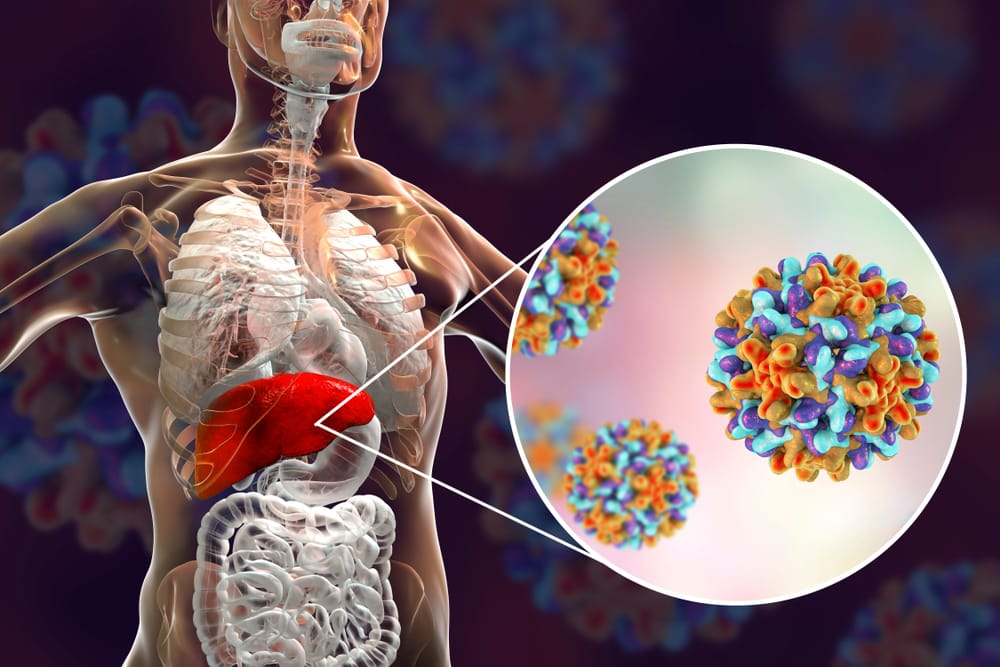Vir Biotechnology, Inc. today (November 8) announced new data from its robust hepatitis B virus (HBV) portfolio aimed at achieving a functional cure. These data, plus health outcomes research, are being presented at the American Association for the Study of Liver Diseases (AASLD).
The Liver Meeting was delivered in two oral presentations, both of which were selected for inclusion in the Best of the Liver Meeting summary, a poster and a late-breaking poster presentation. The Best of the Liver Meeting designation underscores the strength of Vir’s broad hepatitis portfolio, which is addressing both HBV and hepatitis D virus (HDV).
In one oral presentation, new preliminary data from an ongoing phase 2 trial demonstrated that 30.8% of participants receiving 48 weeks of VIR-2218, an investigational small interfering ribonucleic acid (siRNA), initiated concurrently with pegylated interferon alpha, achieved hepatitis B surface antigen (HBsAg) seroclearance with anti-HBs seroconversion.
Vir Biotech
Additionally, 48 weeks of VIR-2218 plus pegylated interferon alpha provided greater reductions in HBsAg compared to VIR-2218 alone or with shorter regimens of the combination. No new safety signals were identified.
Man-Fung Yuen, chief of division of gastroenterology and hepatology, The University of Hong Kong, said: “These new preliminary data demonstrate that VIR-2218 can be potentiated by immunomodulating agents such as pegylated interferon to achieve meaningful HBsAg loss.
“The higher rates of HBsAg seroclearance with anti-HBs seroconversion by the end of the 48-week treatment could be indicative of the potential for this regimen to serve as a curative chronic HBV treatment with a finite duration.”
In a separate oral presentation, new results from part A of the phase 2 MARCH (Monoclonal Antibody siRNA Combination against Hepatitis B) trial, including all three cohorts, demonstrated a mean HBsAg reduction of less than 2.5 log10 IU/mL.
Functional cure
These data showed that VIR-2218 and VIR-3434, an investigational HBsAg-targeting monoclonal antibody engineered to potentially act as a therapeutic vaccine, are additive in reducing HBsAg. The combination of VIR-2218 and VIR-3434 through up to 20 weeks of treatment in part A was generally well tolerated.
Combining the learnings from the VIR-2218 plus PEG-IFN-α trial with these encouraging new results have led to additional cohorts evaluating the triple combination of VIR-2218, VIR-3434 and PEG-IFN-α being added to Part B of the MARCH trial. Initial data from part B are expected in the second half of 2023.
Additionally, phase 1 data presented as a poster demonstrated that a single 75 mg or 300 mg dose of VIR-3434 resulted in rapid reductions in HBsAg and HBV DNA in the majority of viremic participants with chronic HBV infection in the absence of nucleot(s)ide reverse transcriptase inhibitor (NRTI) therapy.
Hepatitis B
Finally, a real-world analysis of 20 years of medical records in the U.S., to be highlighted in a late-breaking poster presentation, revealed that the majority of people with chronic HBV infection remained untreated throughout the study period.
Carey Hwang, Vir’s senior vice president, clinical research, head of chronic infection, said: “The new data from our ongoing therapeutic combination trials continues to support our strategy of combining an antiviral with an immunomodulator and we believe are encouraging steps forward in our pursuit of developing a functional cure for the approximately 300 million people living with chronic HBV.
“We are excited by these data, which are important milestones in the development of our novel HBV compounds VIR-2218 and VIR-3434. We look forward to reporting additional clinical data from one of Vir’s most advanced development programs in 2023.”





